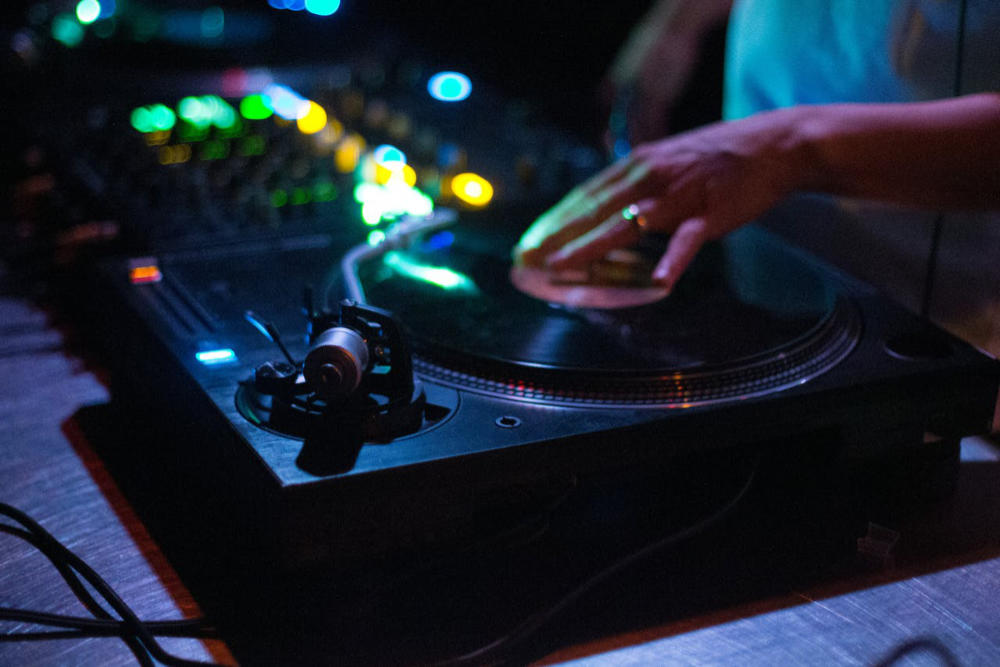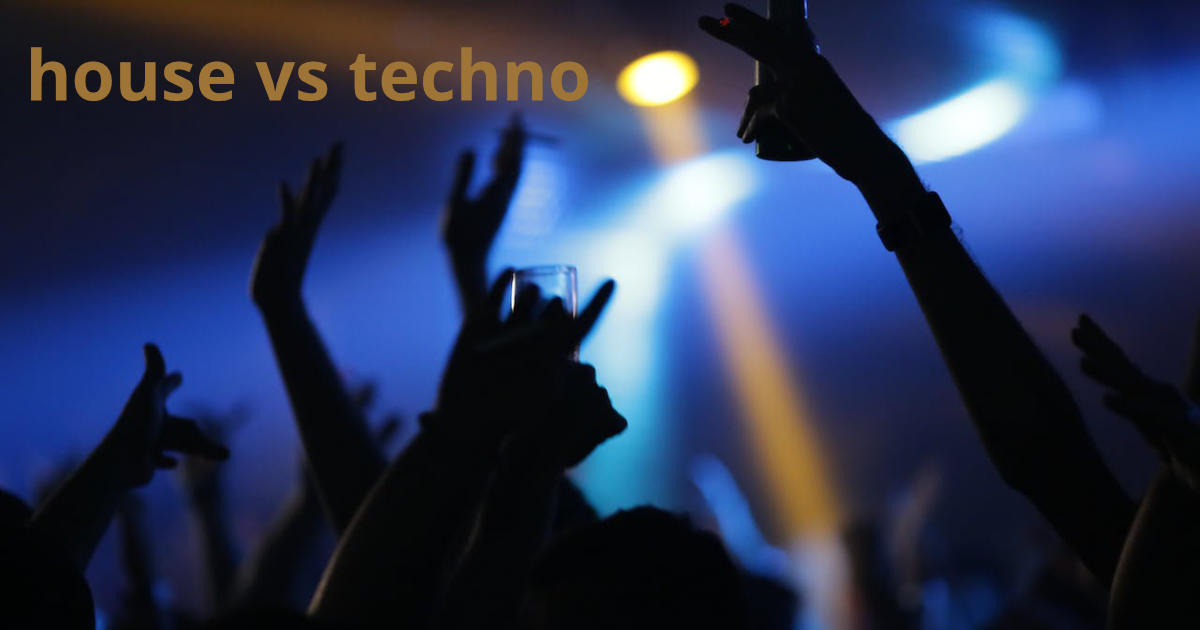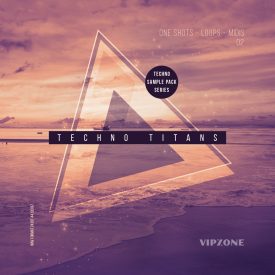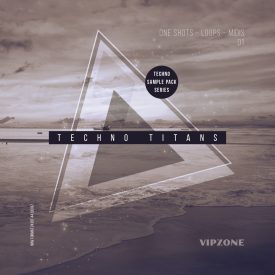Estimated reading time: 16 minutes
House and Techno are two popular electronic music genres that have captivated audiences around the world. While both genres share similarities, they also have distinct characteristics that set them apart. In this article, we will delve into the definition of House and Techno music, explore their key differences, examine their origins and history, discuss the evolution of each genre, analyze their style and structure, and highlight notable artists and tracks in House and Techno.
Table of contents
Definition of House Music and Techno Music
House Music is a genre of electronic music that originated in the early 1980s in Chicago, United States. It is characterized by its repetitive 4/4 beat, synthesized basslines, and soulful vocals. House music is often described as more melodic and accessible compared to Techno.
Techno Music, on the other hand, emerged in Detroit, United States, during the same period. It is characterized by its futuristic sound, heavy use of synthesizers, and a more industrial and mechanical feel. Techno music is often associated with a darker and more underground atmosphere compared to House.
Key Differences between House and Techno
While House and Techno share some similarities, there are key differences that distinguish the two genres.
Firstly, rhythm plays a significant role. House music typically features a steady 4/4 beat with a groove that encourages dancing, while Techno music often incorporates more complex rhythms and syncopation, creating a more hypnotic and driving feel.
Secondly, melody differs between the two genres. House music tends to focus more on melodic elements, incorporating soulful vocals, uplifting chord progressions, and catchy hooks. Techno music, on the other hand, places more emphasis on atmospheric and repetitive patterns, often incorporating abstract and otherworldly soundscapes.
Lastly, energy levels also set House and Techno apart. House music generally has a more energetic and upbeat vibe, designed to keep the dancefloor moving. Techno music, on the other hand, can range from deep and introspective to intense and relentless, creating a more immersive and introspective experience.
To summarize, House music is characterized by its melodic and accessible nature, steady 4/4 beat, and soulful vocals, while Techno music is known for its futuristic sound, complex rhythms, and abstract atmospheres.
| Key Differences between House and Techno |
|---|
| Rhythm: House features a steady 4/4 beat, while Techno incorporates more complex rhythms. |
| Melody: House focuses more on melodic elements, while Techno emphasizes repetitive patterns and abstract soundscapes. |
| Energy Levels: House has a more energetic and upbeat vibe, while Techno can range from deep and introspective to intense and relentless. |
Origin and History
Let’s delve into the origins and history of both genres. We also take a look at the development and pioneers of house and techno.
Origin and History of House Music
The origins of House music can be traced back to the vibrant club scene of Chicago in the early 1980s. DJs such as Frankie Knuckles and Ron Hardy played a crucial role in popularizing the genre by blending disco, soul, and electronic music to create a unique sound. House music was initially played in underground clubs and discotheques, providing a safe haven for marginalized communities.
As House music gained traction, it spread across the United States and eventually reached Europe, where it became a cultural phenomenon. The genre took hold in cities like London, where clubs like The Haçienda became synonymous with the House music movement. Over the years, House music continued to evolve and diversify, giving rise to various subgenres such as Deep House, Progressive House, and Tech House.
Origin and History of Techno Music
Techno music emerged in Detroit, Michigan, during the 1980s. Influenced by the industrial landscape of the city, artists like Juan Atkins, Derrick May, and Kevin Saunderson pioneered the genre, combining elements of disco, funk, and electronic music. These artists, collectively known as “The Belleville Three,” laid the foundation for what would become Techno music.
Unlike House music, Techno was initially more underground and experimental, with its futuristic and mechanical sound attracting a dedicated following. The genre gained international recognition when it reached Europe, particularly in countries like Germany and the United Kingdom. Techno music became synonymous with the rave culture of the 1990s, with iconic clubs like Tresor in Berlin and The Warehouse in Leeds hosting legendary techno parties.

Evolution of House and Techno
House and Techno music have undergone significant evolution since their inception. Both genres have incorporated new sounds, production techniques, and influences over the years, keeping them fresh and relevant.
In the case of House music, the genre has diversified into various subgenres, each with its own distinct characteristics. Deep House emerged in the late 1980s, characterized by its soulful and jazzy elements. Progressive House gained popularity in the 1990s, featuring atmospheric and melodic compositions. Tech House combines elements of House and Techno, resulting in a more driving and energetic sound.
Techno music has also evolved, branching out into different subgenres. Detroit Techno, characterized by its raw and soulful sound, remains influential to this day. Minimal Techno emphasizes stripped-down and repetitive patterns, focusing on the hypnotic and immersive aspects of the genre. Industrial Techno incorporates harsher and more aggressive sounds, pushing the boundaries of conventional Techno music.
Pioneers of House and Techno
Several pioneering artists have been instrumental in shaping the House and Techno music scenes.
In the House music realm, Frankie Knuckles, often referred to as the “Godfather of House,” played a vital role in popularizing the genre. His residency at The Warehouse in Chicago laid the foundation for the House music movement. Larry Levan, known for his work at the Paradise Garage in New York, also contributed to House music’s rise in popularity.
In the Techno realm, Juan Atkins, Derrick May, and Kevin Saunderson, collectively known as “The Belleville Three,” are considered the originators of Techno music. Their innovative productions and DJ sets paved the way for the genre’s global recognition. Richie Hawtin, known for his minimal Techno sound and innovative use of technology, has also made significant contributions to the Techno scene.
Style and Structure of House and Techno
The style and structure of House and Techno music play a crucial role in defining their sound and creating a unique listening experience.
In House music, the typical structure follows a verse-chorus format, similar to traditional pop songs. The tracks often feature soulful vocals, catchy melodies, and a consistent 4/4 beat. House music is designed to keep the energy levels high and create an uplifting and euphoric atmosphere on the dancefloor.
Techno music, on the other hand, often follows a more linear and hypnotic structure. Tracks can be longer and more repetitive, with gradual build-ups and breakdowns. The focus is on creating a mesmerizing and immersive experience, with intricate sound design and atmospheric elements taking center stage.
BPM (Beats Per Minute) in House and Techno
The beats per minute (BPM) in House and Techno music are essential factors that contribute to the genres’ distinct characteristics.
In House music, the BPM usually ranges between 120 and 130. This tempo provides an ideal balance between energy and groove, making it suitable for dancing and creating a lively atmosphere. The consistent 4/4 beat ensures a steady rhythm that keeps the momentum going throughout the track.
Techno music, on the other hand, often features a higher BPM range, typically between 130 and 150. The faster tempo adds intensity and drive to the music, creating a more energetic and fast-paced experience. However, it’s important to note that Techno is not solely defined by its BPM, as the genre can also incorporate slower and more atmospheric tracks.
Common Subgenres of House and Techno
Both House and Techno have given rise to various subgenres, each with its own unique characteristics and fanbase.
In the House music realm, some common subgenres include:
- Deep House: Known for its soulful vocals, jazzy chords, and laid-back grooves, Deep House creates a relaxed and atmospheric vibe.
- Progressive House: Featuring melodic and atmospheric compositions, Progressive House builds gradually, taking listeners on a journey of evolving soundscapes.
- Tech House: Combining elements of House and Techno, Tech House delivers a more driving and energetic sound, perfect for the dancefloor.
In the Techno music realm, notable subgenres include:
- Detroit Techno: Characterized by its raw and soulful sound, Detroit Techno pays homage to the genre’s origins in the Motor City.
- Minimal Techno: Stripping down the music to its essential elements, Minimal Techno focuses on repetitive patterns and hypnotic rhythms.
- Industrial Techno: Incorporating harsh and aggressive sounds, Industrial Techno pushes the boundaries of conventional Techno, creating a more intense and abrasive experience.
Key Instruments Used in House and Techno
House and Techno music utilize a variety of instruments and equipment to create their distinctive sounds.
In House music, the following instruments are commonly used:
- **Drum Machines1. Drum Machines: Drum machines such as the Roland TR-909 and TR-808 are iconic in House music production. They provide the signature 4/4 beats and rhythmic patterns that drive the tracks.
- Synthesizers: Synthesizers play a vital role in creating melodic elements in House music. From classic analog synths to modern digital ones, they are used to produce basslines, chords, and catchy lead melodies.
- Samplers: Samplers allow producers to manipulate and incorporate various audio samples into their tracks. They can sample vocals, percussion sounds, or even snippets from other songs, adding unique textures and layers to the music.
In Techno music, the following instruments are commonly used:
- Drum Machines: Similar to House music, Techno relies heavily on drum machines like the Roland TR-909 and TR-808. These machines provide the driving beats and rhythmic complexity that define the genre.
- Synthesizers: Techno music often utilizes synthesizers to create atmospheric and abstract sounds. From eerie pads to futuristic stabs, synthesizers help shape the otherworldly and mechanical nature of Techno.
- Effects Units: Effects units like delay, reverb, and distortion are crucial in Techno production. They add depth, space, and texture to the sounds, creating an immersive and hypnotic experience.

Repetitive Beats vs Futuristic Themes
One of the distinguishing factors between House and Techno music lies in their approach to beats and themes.
In House music, repetitive beats are a fundamental element. The consistent 4/4 rhythm, combined with catchy drum patterns, creates a groove that is meant to keep people moving on the dancefloor. House tracks often have infectious basslines and vocal hooks that are designed to be memorable and catchy.
Techno music, on the other hand, often explores more futuristic and abstract themes. The emphasis is on creating an otherworldly and mechanical atmosphere, with tracks that incorporate experimental sounds and textures. The beats in Techno can be repetitive, but they are often more complex and syncopated, adding to the hypnotic and driving nature of the genre.
While both House and Techno share repetitive elements in their music, House focuses on creating a groove and memorable hooks, while Techno explores futuristic and abstract themes, pushing the boundaries of conventional electronic music.
Notable Artists and Tracks in House and Techno
Both House and Techno music have seen the rise of numerous notable artists and tracks that have left a lasting impact on the genres.
In House music, some notable artists include:
- Frankie Knuckles: Known as the “Godfather of House,” Frankie Knuckles played a pivotal role in shaping the genre. His track “Your Love” is considered a classic in the House music canon.
- Larry Heard: Larry Heard, also known as Mr. Fingers, is recognized for his soulful and melodic approach to House music. His track “Can You Feel It” is often hailed as one of the greatest House tracks of all time.
- Robin S: Robin S achieved worldwide success with her hit track “Show Me Love.” The song showcased the powerful combination of soulful vocals and infectious House beats.
In the Techno realm, notable artists include:
- Carl Cox: Carl Cox is a legendary figure in the Techno scene, known for his energetic DJ sets and innovative productions. His track “I Want You” remains a Techno anthem.
- Jeff Mills: Jeff Mills, also known as The Wizard, is renowned for his pioneering work in Detroit Techno. His track “The Bells” is considered a timeless masterpiece in Techno music.
- Nina Kraviz: Nina Kraviz has gained recognition for her unique blend of Techno and Acid House. Her track “Ghetto Kraviz” propelled her to international fame and established her as a leading figure in the genre.
| Notable Artists and Tracks in House and Techno |
|---|
| House: |
| 1. Frankie Knuckles – “Your Love” |
| 2. Larry Heard – “Can You Feel It” |
| 3. Robin S – “Show Me Love” |
| Techno: |
| 1. Carl Cox – “I Want You” |
| 2. Jeff Mills – “The Bells” |
| 3. Nina Kraviz – “Ghetto Kraviz” |
Daft Punk’s Impact on House and Techno
Daft Punk, the French electronic duo, has had a significant impact on both House and Techno music. Their innovative productions and iconic performances have shaped the electronic music landscape.
Daft Punk’s fusion of House and Techno elements in their music has made them pioneers of the genre known as “French Touch.” Their breakthrough album “Homework” showcased their unique sound, blending catchy hooks, distorted samples, and infectious beats. Tracks like “Around the World” and “Da Funk” became global hits, introducing a new generation to the infectious rhythms and energy of House and Techno.
Daft Punk’s influence extended beyond their music. Their iconic robot personas and elaborate live performances revolutionized the electronic music scene. They brought a new level of showmanship and theatrics, creating immersive experiences for their audiences.
With their groundbreaking contributions, Daft Punk solidified their place as legends in both House and Techno music, leaving an indelible mark on the genres’ history and development.
Popular Tracks in House and Techno
House and Techno music have produced countless tracks that have become anthems and favorites among fans. Here are some popular tracks from each genre:
Popular House tracks:
- Stardust – “Music Sounds Better with You”: This feel-good House track combines catchy vocals and infectious rhythms, making it a dancefloor favorite.
- Inner City – “Good Life”: Inner City’s iconic track is a classic in House music. Its uplifting melodies and soulful vocals epitomize the genre’s joyful and euphoric nature.
- Moloko – “Sing It Back” (Boris Dlugosch Remix): This remix of Moloko’s track infuses House elements with a funky bassline and a memorable vocal hook, creating a dancefloor anthem.
| House Artists | Notable Tracks |
|---|---|
| Frankie Knuckles | “Your Love” |
| Larry Heard | “Can You Feel It” |
| Robin S | “Show Me Love” |
| Daft Punk | “Around the World” |
| Inner City | “Good Life” |
| Stardust | “Music Sounds Better with You” |
| Moloko | “Sing It Back” (Boris Dlugosch Remix) |
Popular Techno tracks:
- Underworld – “Born Slippy (Nuxx)”: Underworld’s high-energy Techno track gained widespread recognition after being featured in the film “Trainspotting.” Its driving beats and infectious energy make it a staple in Techno sets.
- Adam Beyer – “Teach Me”: Adam Beyer’s track is a prime example of modern Techno. Its pulsating bassline and hypnotic rhythms create a dark and intense atmosphere.
- Ben Klock – “Subzero”: Ben Klock’s powerful Techno track is characterized by its relentless beats and atmospheric elements, taking listeners on a sonic journey through the depths of the genre.
| Techno Artists | Notable Tracks |
|---|---|
| Carl Cox | “I Want You” |
| Jeff Mills | “The Bells” |
| Nina Kraviz | “Ghetto Kraviz” |
| Underworld | “Born Slippy (Nuxx)” |
| Adam Beyer | “Teach Me” |
| Ben Klock | “Subzero” |
House and Techno Production with Sample Packs
Sample packs are an integral part of music production, providing producers with a vast array of sounds, loops, and elements to create their tracks. In the realm of House and Techno music, specific sample packs tailored to each genre offer a treasure trove of sounds that capture the essence of these styles.
Producers seeking to infuse their compositions with the authentic essence of House or delve into the atmospheric depths of Techno can elevate their tracks by exploring meticulously crafted house samples and techno sample packs, each offering a diverse spectrum of sounds tailored to enrich the sonic landscape of these respective genres.
These sample packs serve as valuable resources for both novice and experienced producers, providing a wealth of sounds to inspire and elevate House and Techno music production. They encapsulate the distinct characteristics and nuances of each genre, empowering producers to craft tracks that capture the essence of House’s infectious groove or Techno’s futuristic and immersive soundscapes.
-
Product on saleTechno Titans 02 – Techno Sample Pack Series [Digital]Original price was: 19,00 €.9,00 €Current price is: 9,00 €.Includes 19% VATDelivery Time: Instant download
-
Product on saleTechno Titans 01 – Techno Sample Pack Series [Digital]Original price was: 19,00 €.9,00 €Current price is: 9,00 €.Includes 19% VATDelivery Time: Instant download
Embracing Techno Style: Techno Clothing and Outfits
The world of electronic music extends beyond auditory experiences, often intertwining with distinctive fashion statements. Techno clothing and outfits form an integral part of the culture, reflecting the genre’s vibe and energy.
Embracing bold and futuristic aesthetics, techno outfits typically feature avant-garde elements, sleek designs, and a fusion of urban and cyber-inspired fashion. Dark, monochromatic attire, geometric patterns, metallic accents, edgy accessories, reflective materials, and statement pieces often define the essence of techno-inspired fashion. The fusion of comfort, individuality, and a nod to the genre’s dynamic nature are central to crafting a unique techno outfit that complements the electrifying ambiance of techno music events.
Explore More: Related Articles
Expand your musical horizons and delve deeper into the diverse realms of house and techno music with our collection of insightful articles.
1. House vs Trance: Unveiling the Contrasts Between Dance Music Genres Delve into the distinctions between House and Trance, exploring their rhythmic intricacies, melodic journeys, and unique atmospheres to grasp the nuances that set these dance music genres apart.
2. Is House Music EDM? Demystifying Electronic Dance Music’s Foundations. Discover the relationship between House music and its categorization within the broader spectrum of Electronic Dance Music (EDM), unraveling how House influences and contributes to the EDM landscape.
3. Best 90s Techno Songs: Nostalgic Tracks that Defined an Era. Relive the pulsating rhythms and groundbreaking sounds of the ’90s with a curated collection of the finest Techno tracks, celebrating the iconic songs that left an indelible mark on the electronic music scene.
4. Best Techno Albums: Timeless Creations Redefining Electronic Music. Immerse yourself in a selection of the most influential and innovative Techno albums that have shaped the genre’s evolution, exploring the sonic journeys crafted by visionary artists.
5. Best Techno DJs: Celebrating Pioneers and Innovators of the Electronic Sound. Explore the realm of Techno’s most influential DJs, acknowledging their contributions, innovative sets, and mastery in shaping the course of electronic music culture.
6. Rave Music Genre Unveiled: Your Ultimate Groove Guide.
Conclusion
In essence, House and Techno music, though born from the same electronic music sphere, boast unique identities marked by rhythm, melody, and energy. House resonates with soulful vocals and infectious beats, urging movement on dancefloors, while Techno’s futuristic soundscapes and intricate rhythms create an immersive, introspective experience. Originating from Chicago and Detroit, these genres have evolved through pioneering artists, iconic tracks, and diverse subgenres, leaving an indelible mark on global music culture. Sample packs tailored to House and Techno production offer a wealth of sounds, empowering producers to capture the essence of these genres. As they evolve with contemporary trends, House and Techno remain integral parts of electronic music, uniting audiences and continuing to shape the ever-evolving musical landscape.
FAQ
House music is characterized by its soulful vocals, melodic elements, and steady 4/4 beats, designed for an energetic dancefloor vibe. In contrast, Techno boasts a futuristic sound, intricate rhythms, and abstract atmospheres, offering an immersive, often introspective experience.
Frankie Knuckles, known as the “Godfather of House,” and “The Belleville Three” (Juan Atkins, Derrick May, Kevin Saunderson) pioneered House and Techno, respectively. Their innovative contributions laid the groundwork for these genres’ global recognition.
Both genres have diversified into subgenres like Deep House, Progressive House, and Tech House for House music, and Detroit Techno, Minimal Techno, and Industrial Techno for Techno. These subgenres showcase various stylistic elements, catering to evolving tastes.
Iconic tracks include “Your Love” by Frankie Knuckles and “Can You Feel It” by Larry Heard in House. In Techno, tracks like “The Bells” by Jeff Mills and “Ghetto Kraviz” by Nina Kraviz stand out for their influence and distinctiveness.
Tailored sample packs offer a diverse range of drum loops, synth sequences, vocals, and FX elements. These packs capture the essence of each genre, empowering producers to craft authentic tracks resonating with House’s infectious energy or Techno’s immersive atmospheres.


